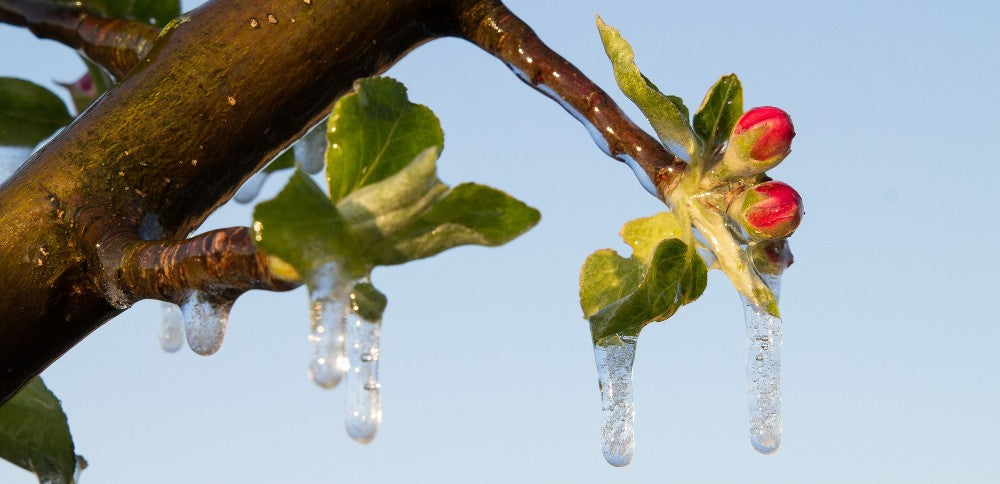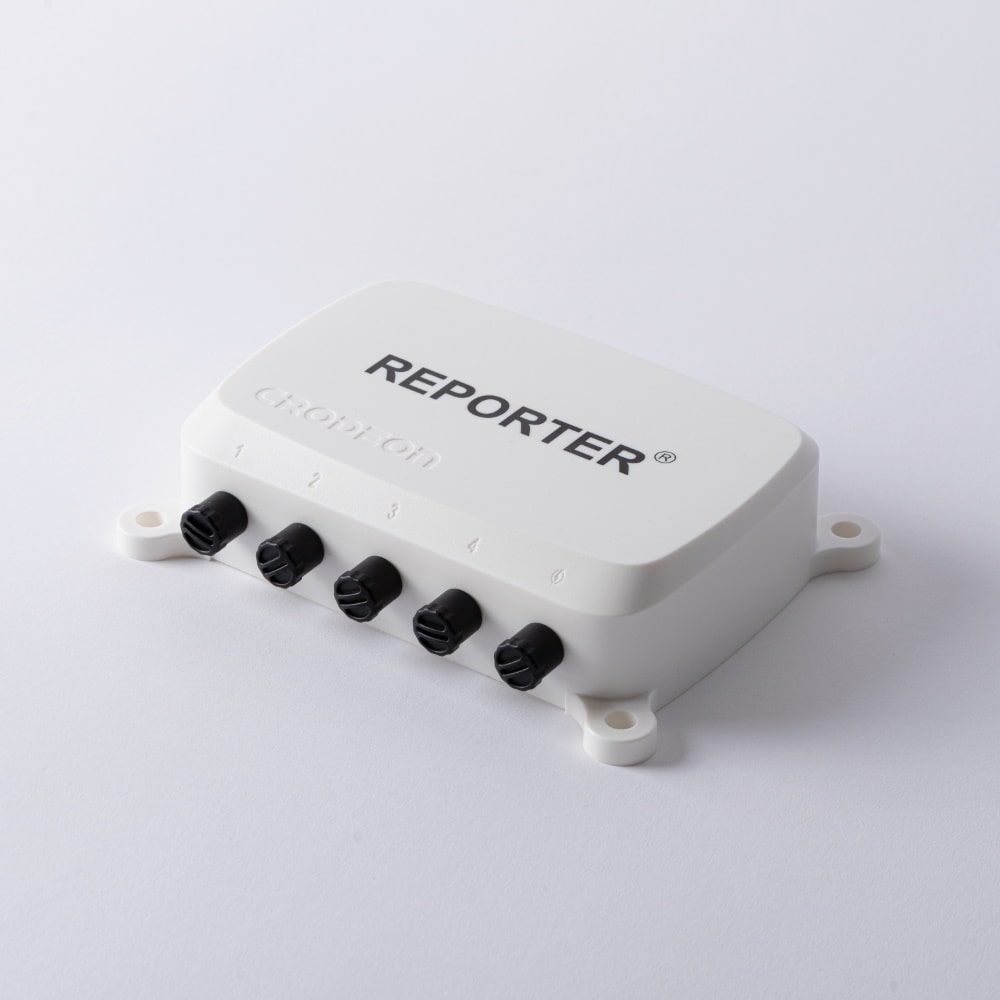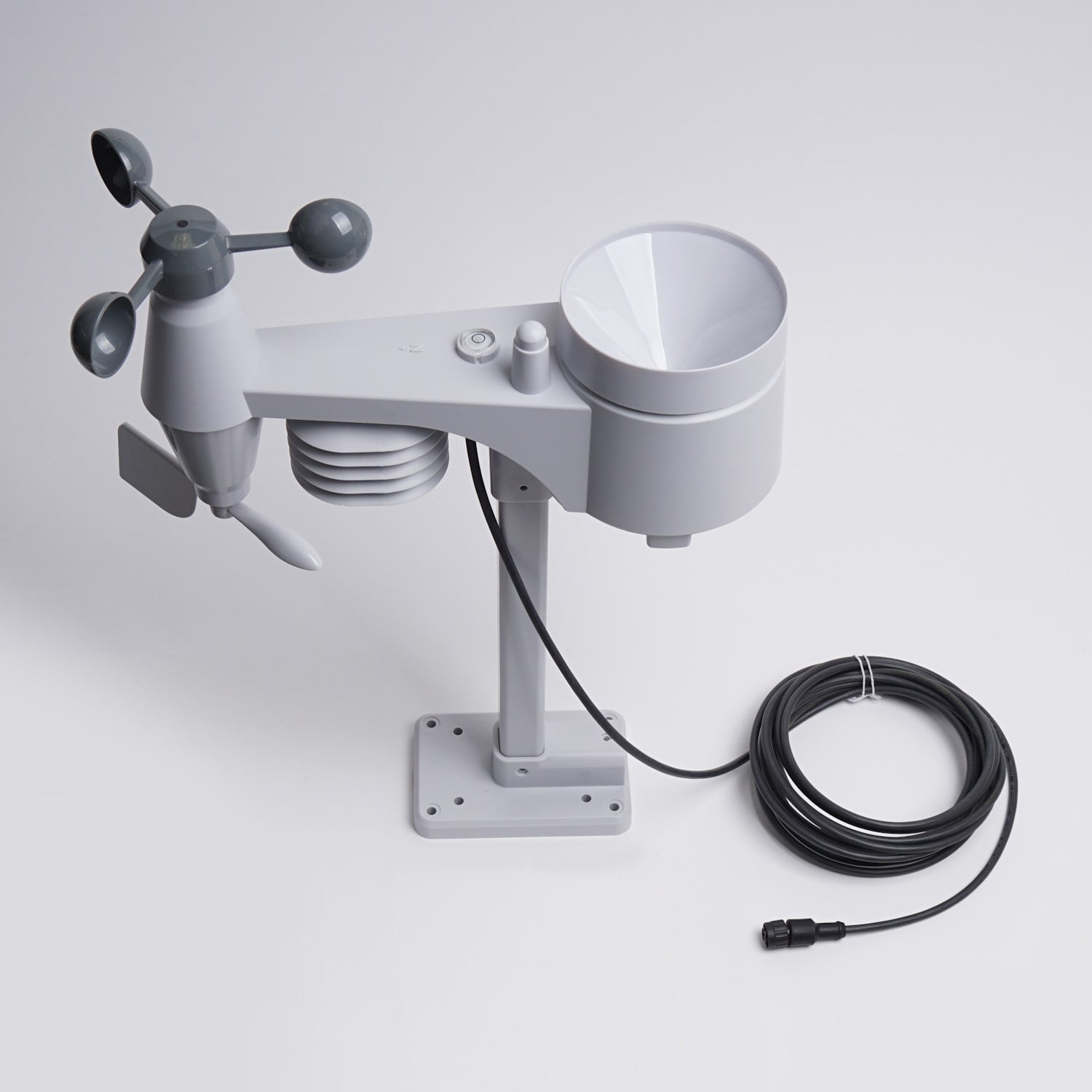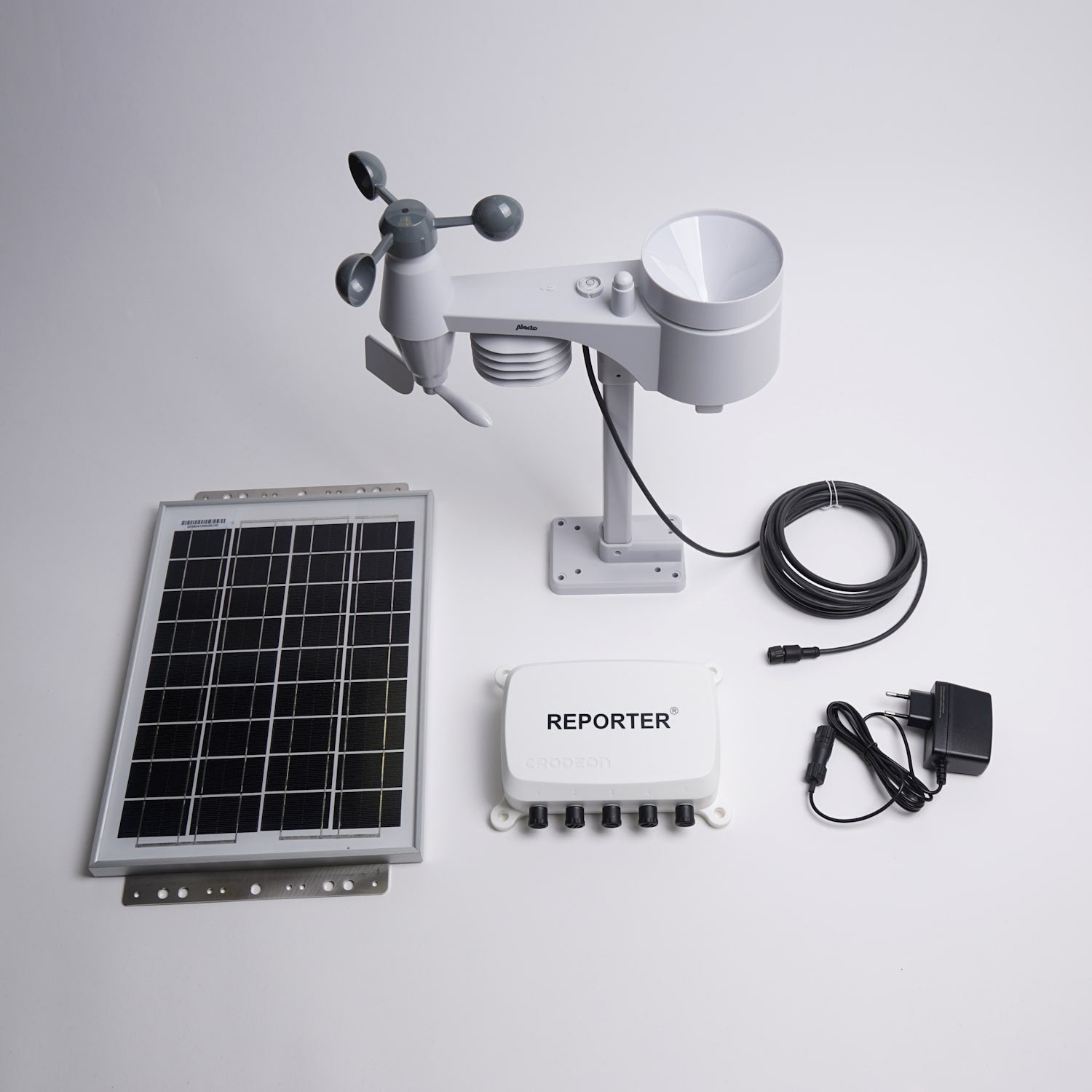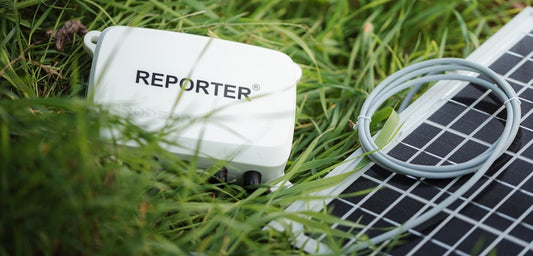How to install a weather station
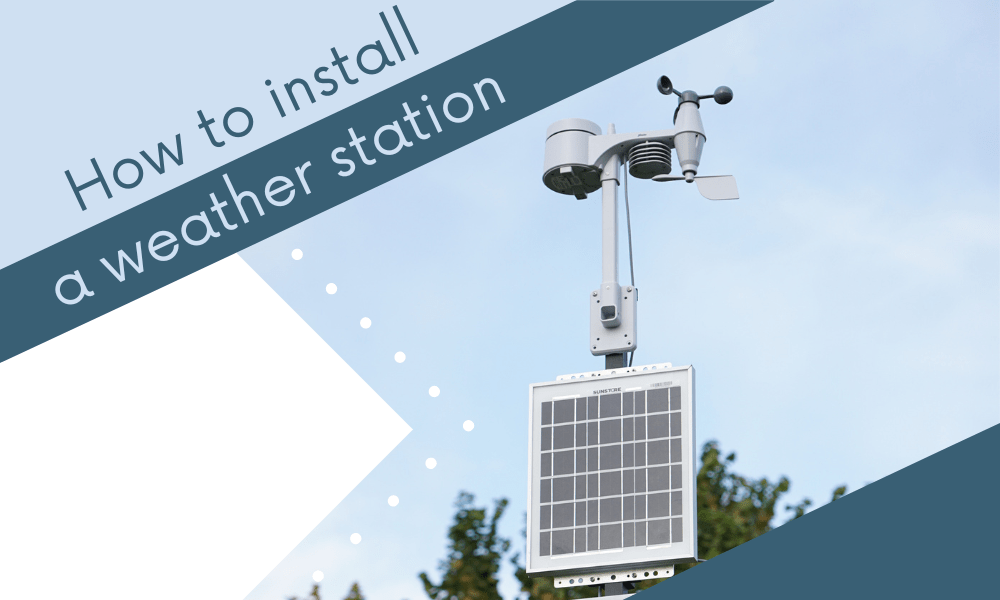
Congratulations! You've taken the first step towards your new measuring project. You understand the importance of collecting your own reliable data and the importance of installing your weather station in the right way. After all, an incorrectly installed weather station does not give you the accurate and reliable data you're looking for.
Now you're looking for more information in regards to setting up a weather station. We will discuss some do's and don'ts in detail in the rest of this blog. If your question is not answered by the end of the page, don't hesitate to contact us.
Mounting a weather station
When installing a weather station, you should pay attention to the height at which you place the sensors. For accurate readings, a sensor should never be obstructed as it would affect your readings nor should it be placed somewhere where your sensor is influenced by other factors. Factors that could obstruct or influence your readings are:
- Bodies of water: when placing your weather sensor close to a (small) body of water, it may affect your temperature and humidity readings that your temperature and humidity sensor measure.
- Plants: plants create a lot of water vapour, placing your sensor very close to them may affect your temperature and humidity readings.
- High objects: trees, buildings, walls or other structures can act as an umbrella or windshield for your weather station. They may even alter the direction of the wind that eventually reaches your sensors or rain gauge. Your rain, wind speed and wind direction readings may therefore become inaccurate.
- Surfaces: stone, metal and dark surfaces absorb and reflect a lot of heat. This means that placing a weather sensor on a black roof in the full sun will definitely alter your temperature readings. The same goes for asphalt roads, concrete flooring or metal surfaces. They will even continue to give off heat when the outside temperature has already started to lower.
Height
To make sure that the surroundings will not affect your weather sensor and prevent you from getting accurate readings, it is important to respect a minimal distance in height between your weather station and its underground. This is why we advise placing it at least 2m higher than the surface you installed it on.
This is why in most cases people opt to install their weather stations on a metal pole.
Distance
To be certain that your weather station is not obstructed or affected by its surroundings, we must also respect the distance that it should be placed at, away from different factors.
Ideally, it would be located at a horizontal distance of 4 times the height of the nearest obstruction. For example, if there's a 20m tall building, your weather sensor should be installed at least 80m further. Or if possible: install the weather station on top of the tall building, 2m up from the roof.
It shouldn't be placed in a ‘tunnel’, unless you're specifically trying to measure a tunnel effect.
Getting Ready for Installation: Tools
Now that you know where to install your weather station you might wonder what tools you need to install weather stations. We'll give you a quick overview of the tools that may come in handy.
What are you going to attach your weather sensor to?
Have you already decided what you're going to attach the sensor to? If you're not certain, we recommend choosing a sturdy water and weatherproof metal pole of at least 2m high.
Don't forget that your set up also needs maintenance. Don't forget to attach your extra optional sensors if you have those.
Tools
To mount your weather sensor you might need the following:
- Screws (and plugs) or nuts and bolts, plain washers
- A drill or screwdriver
- Tie wraps to attach your sensor cable to the pole
- A spirit level to level your underground or pole
How to mount a weather station
When using a Crodeon Weather station, your weather sensor comes with a holder that lets you attach the sensor either vertically or horizontally.
This gives you the freedom to attach the weather station onto a pole, roof garden, caravan, rooftop, wall etc.

Vertical position: left. Horizontal position: right.
When mounting the weather sensor to a pole in the vertical position, you can make use of the mounting kit. This kit is included in every box.
An integral part of your weather station set-up is the way it is attached. Whether your weather station is attached to a pole or to the edge of a roof, you will have to check whether it is stable.
- Does the weather sensor not move around on the pole?
- Can the weather sensor shake or is it securely fastened?
- Does the pole shake?
When the weather sensor is not securely fastened, it may shake during storms. This disturbance can cause your measurements to become unreliable. The tipping bucket rain sensor may detect ‘rain’ when it's being hustled about and forcefully tipped over, even when there is no actual rain at all. The shaking of the sensor may also cause water that is actually present to be forced out, which also affects your readings.
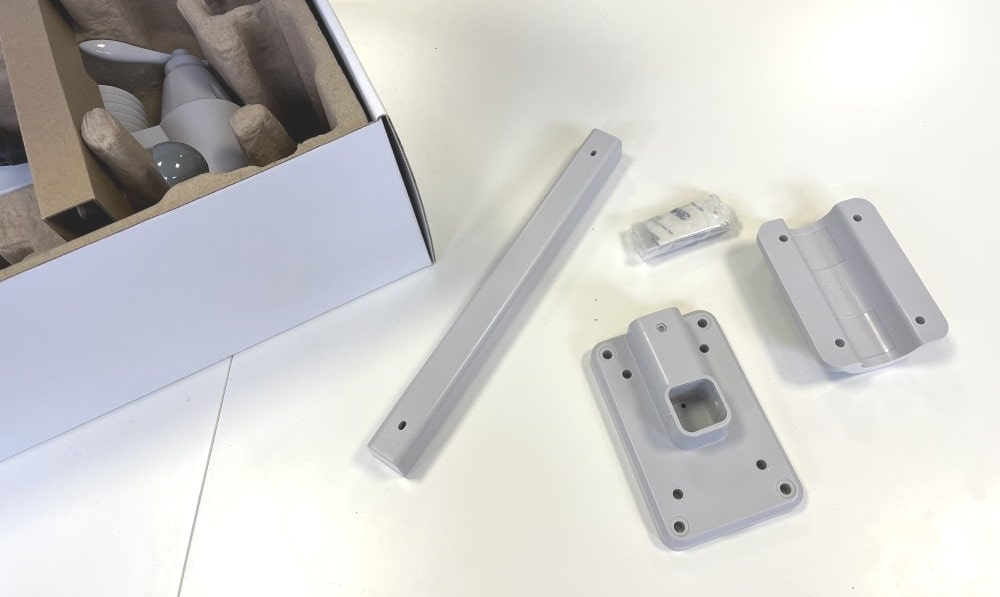
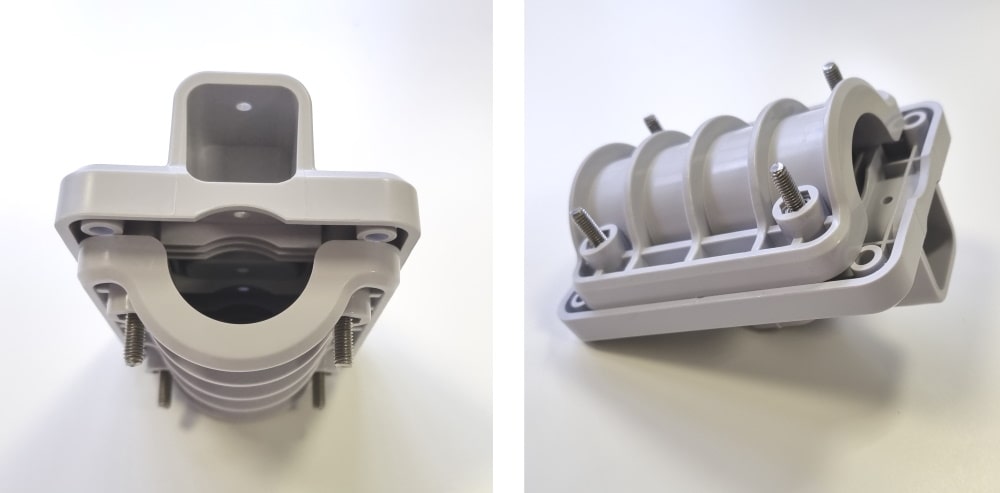

Level
The weather sensor should always be installed upright. The sensor comes with a built-in spirit level to help you correctly position it. This spirit level is located next to the North arrow right above the temperature and humidity sensor (see image below).
Direction
The direction in which you install your sensor also affects the readings. The wind sensor that we use has an arrow which should be pointed towards the North to ensure accurate readings (see image below). It's helpful to keep in mind that most weather stations do not have a compass but rather should be ‘calibrated’ by facing a certain direction.

How to install a weather station in an orchard?
Knowing where to place the sensors is crucial when establishing your own weather sensor setup in an orchard. You might need multiple weather stations depending on the size of your field and whether it's on a slope. One set of sensors is needed at the field's centre for typical orchards. Two sets of sensors would be required for a sizable field. Two sensor sets are advised when the field is on an incline: one near the lowest elevation and one near the highest elevation. Depending on your orchard, you might require one or two sets with Reporter for your weather station.
Installing a weather station: the technical side
Another important part when it comes to setting up a weather station is the technical aspect. For the Crodeon weather station that uses Reporter, this step is as simple as can be. We designed Reporter to be the epitome of user-friendliness, so everyone would be able to install it, even without having a technical background.
- Plug your weather station into one of Reporter's connectors.
- Open the Crodeon Dashboard.
- Wait a few seconds and voila, your weather station appears.
- Configure the settings to your liking.

If you want to use the weather station API, be sure to contact us so we can help you get that set up as well!
Setting up a weather station: in the cloud
When the Crodeon weather station has correctly been recognised by Reporter and shows up on the Dashboard, you’re free to configure your system to your liking. You can set alarm notifications, change the name of your sensors and much more. More information about the Crodeon Dashboard will be online soon.

Q&A
To answer all your questions regarding mounting a weather station, we set up a clear Q&A. Hopefully it will give you more insight into how to install a weather station. If your question is not answered by the questions below, don't hesitate to contact us.
Height
How high should a weather station be mounted?
In general, a weather station should be placed at least 2m high, even in an open field. If you place it on top of a building, install it 2m higher than the roof.
How high should I mount my weather station?
Your weather station should be placed at a horizontal distance of 4 times the height of the nearest obstruction, plus at least 2m of the underground.
Obstructions
Can I place my weather station right next to a tree?
If you want to place your weather station next to a tree, you will have to pay attention to the height at which you mount it. Your weather station should be placed at a horizontal distance of 4 times the height of the tree, 2m up from the underground.
Can my weather station be surrounded by high buildings?
Depending on what you’re trying to measure, yes and no. If you want to measure the specific climate in between the buildings, where temperature and wind speed might differ from the general weather: yes.
If you want to measure the general weather, unaffected by obstruction or a tunnel effect: no. In this case, you will have to measure on the top of the building or respect the ‘4 times the height of the nearest obstruction’ rule.
Lightning
Can my weather station be struck by lightning?
Yes, a risk of being the highest point is attracting lightning. Therefore the chance exists that a weather station may be hit by lightning, albeit very small. We advise connecting the weather station to a solar panel rather than grid power. This means that lightning will not directly enter a building’s power grid but mostly ends at the weather station itself.
Direction
Does my weather sensor have to face a specific direction?
Yes, usually your sensor will have an arrow which has to face the North. Setting up a weather station without paying attention to the right direction will affect your readings: your wind direction measurements will be incorrect. Please note that weather sensors generally do not have an internal compass.
Pole
How to mount a weather station on a pole?
When installing a weather station it would be useful in many cases to choose a pole. This is a simple and sturdy way to make sure that your weather sensor is able to measure free of obstruction.
Weather station mounting poles
A weather station mounting pole has to be sturdy and strong. We recommend using a strong, non-corrosive metal that won’t easily bend or break during storms. Make sure your pole is round(ed), so it does not catch wind.
Roof
How to mount a weather station on a roof?
When mounting a weather station on a roof it is important to pay attention to the fact that it would best be mounted 2m higher than the rooftop itself.
How to install a weather station on a mountain top?
When you want to measure and monitor the weather up on a mountain, your weather sensor would ideally be installed at the very top of the mountain, on a 2m high pole.
Can I mount a weather station on a dead tree? Given I would remove all of the branches so nothing could obstruct my measurements?
No, we would not recommend this. A dead tree will start to rot over time, bugs will start to eat the dead wood etc. In the long run, the stability of the tree will decline and thus risk collapsing. Installing a weather station onto a dead tree is not a good idea.
Solar power
Does my solar-powered weather station work in the shade?
The Crodeon weather station is able to work as long as daylight is available, the solar panel is incredibly powerful. Even in the shade, Reporter will be able to be powered. Most other solar-powered weather stations will probably not work in the shade.
Does my solar-powered weather station work under tree coverage?
No, unfortunately even the Crodeon weather station is not able to be powered when there is permanent leaf coverage.
Do I have to place my solar panel in a specific direction?
Try to let your solar panel face the side where it will receive the largest amount of daylight, placing it at a 45° angle. In most cases, this will be the South. However when the South side gives the most shade, try turning your solar panel in another direction.
Construction site or research site
How do I install my weather station at a construction site?
When monitoring your construction site or research site with a weather station, you can attach your weather sensor to a crane, scaffolding, a pole, a fence or another higher object.
Can I move my weather station between sites?
Reporter with the Crodeon weather station is a mobile system, meaning that you can easily move your monitoring system from site to site.
Can I attach my weather station to a crane?
Yes! This also helps you monitor whether you need to protect your crane in stormy weather or not.
Can I attach my weather station to scaffolding?
Yes! Storm and scaffolding aren’t always the best friends, when you have a weather station attached to your scaffolding you know whether the wind is endangering your scaffolding or not.
Was your question not answered? Don’t hesitate to fill out the contact form on this page.

